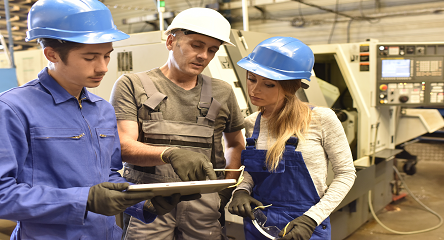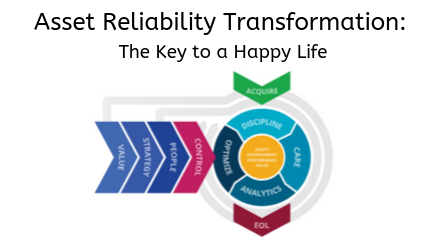While normal business has been interrupted due to precautions taken to address the global pandemic, the need to continue to drive improvement and provide development opportunities for our employees continues.
We can all agree that the world has changed in a profound way, with many of us become well attuned to the new normal of Zoom or Teams meetings replacing the traditional face-to-face interactions we used to enjoy. I would propose that this post-pandemic world retains some of these structures we have put in place out of necessity. I wonder if the future consists of some blend of remote and face-to-face interactions, a combination that, when leveraged correctly, provides us with some unique opportunities to interact in ways that might not have considered had we not gone through the past 18 months.
Opportunities with Flexibility in Delivery
What I think is one of the most profound opportunities associated with our reliance on remote training is in that it has forced us to be strategic in the messaging and delivery of our training opportunities. In the not-so-distant past, if we thought about holding a training class, we needed to book flights, find a suitable training facility to hold all the participants, order a bunch of pizzas to be delivered at precisely the right time each day. Interruptions to the business while those attending training were away brought with them a heavy impact, bleeding into the weeks prior and after the event as those attending prepared to be away for an extended period. The training content was often shaped to fit the duration of the event that we felt made the most of the overhead costs associated with getting all our people together.
In the pandemic world where face-to-face interaction is limited or nonexistent, we are forced to carefully shape our messaging, dividing the training delivery into smaller segments, possibly even scheduled over multiple days or weeks, to accommodate business critical activities that must take place in addition to the training event.
We have been forced to reshape our messaging to fit into these smaller sound bites, with limited amounts of the precious time allotted to background or theoretical discussion; those delivering the training constantly aware of the risk of losing the audience at the other end of an internet stream with some overly wordy and obtuse discussion. We tend to economize on message and delivery; to skip to the important parts. “What am I asking you to do?” “Why is it important?” and “How can you do it?”. That’s it, thank you for your time.
Capitalizing on these Opportunities
The lack human interaction, and the effect it has had on our ability to communicate fully with each other, should not be understated. We need to return some level face-to-face communication that we enjoyed before all of this happened, but perhaps a blending of the best of both situations is warranted, with some remnants of this new economized way of delivering training informing a new way of training our people:
- Start with the End in Mind, the Franklin Covey adage comes to mind. Think about the behaviors we are looking to change, the skills we are trying to develop, and home in on the most precise and exact communication we can muster to achieve this end goal. Humans, but adults especially, learn best is short, direct, and immediately actionable conversations.
- Use the flexibility afforded to us by technology to our advantage. Not only does the technology we leverage to communicate these days (and the rapid increase in our employee’s adoption of these technologies) given us interesting ways to display and share information, but it has also provided us with flexibility in our delivery. Maybe we no longer need the 40 hours, costly airfare, and pizzas, but rather can deliver the same messaging in a more effective blended approach over multiple smaller sessions focused in on discrete topics. These sessions designed to deliver short and specific topics that can build on themselves over time. Perhaps a blended solution with some remote delivery of a carefully designed curricula culminating with a face-to-face meeting may be more in order. If we have learned nothing, we should have learned that a new look at the way we design and deliver our messaging may be in order.
Challenges in Ensuring Engagement
At this point, I know what you are all thinking. This all sounds good, and think of all the money I will save on pizza, but with everyone gathered around their computers, is any one really listening?
It’s a fair question, one I ask myself often, but there are things we can do in order to both encourage and measure this engagement when delivering training remotely. Of course, asking everyone to turn their cameras on helps, but we all must admit that we have all become masters of multitasking in this remote working environment, nodding our heads in knowing agreement with statements being made during a meeting, while at the same time adjusting a complex formula in a spreadsheet or shopping for new golf clubs online.
Much as with the opportunity afforded by flexibility in delivery, ensuring engagement can be enhanced with a careful design of the messaging and curricula. At the lowest level, we could put together an opus 100 slide long presentation and read it to a group of folks over a 4-hour marathon session, and in the end ask them to express their appreciation of the material on a 5-point scale, but we need to ask ourselves, what have we learned from their feedback, and what have they learned from us.
A better approach may be to leverage the technology that has been forced upon us given these new and temporary working arrangements. Is there a way to measure the engagement of those receiving the training, and better yet, the change in behaviors and resulting improvements we hope to achieve because of our efforts?
One potential way to measure engagement and the resulting effectiveness of training may be found in Bloom’s Taxonomy first published in 1956 and summarized in the table below:
| |
Level |
Description |
| 1 |
Remember |
Can copy or recognize |
| 2 |
Understand |
Can summarize, categorize, or group |
| 3 |
Apply |
Reenact, Articulate, or Display |
| 4 |
Analyze |
Structure, Attribute, Estimate |
| 5 |
Evaluate |
Validate, Assess, Hypothesize |
| 6 |
Create |
Devise, Design, Facilitate |
The theory behind Bloom’s Taxonomy is that as a person has a low level of understanding, they operate in the Remember level where they could match or recognize a concept, but not necessarily apply it (this is an apple). When training is more effectively delivered (quality of content, repetition, and experience) people tend to operate at higher levels like Evaluate where one could assess the quality of something (this is a sour apple that would be good for cider but not pie).
If we apply this thinking to our training efforts, the challenge would be how do we help our people move beyond simple recognition (this is a Preventive Maintenance Task) to higher levels of Analyze, Evaluate (this is a Preventive Maintenance Task which is producing this effect and which could be better if we modified X, Y, and Z).
Given the flexibility associated with online meetings such as WebEx, Zoom, or Teams, and online collaboration methods such as SharePoint, Teams, or OneDrive, we can present an idea to a team immediately followed by some direct application of that idea. We can send teams out into separate meeting rooms, today or at some point in the future, with the expectation that they come back together and present their application of these ideas (i.e. performing a hazard analysis on a task, evaluating a proactive maintenance task and identifying improvements, or analyzing a recent failure in order to determine root cause).
When the facilitator does all the talking, engagement is limited. When we set expectations for applying what we have learned early, and coach them through this application, engagement is more completely achieved with measurable results to follow shortly after.
Overcoming These Challenges
Leveraging remote learning by itself will always present challenges in ensuring engagement, but we can increase our odds by applying a few of the following ideas:
- As with the opportunities around flexibility in delivery, start with an ending in mind. What are the behaviors or skills we hope to affect? What would these learning objectives look like if the person receiving the message were able to operate in the higher levels of Bloom’s Taxonomy.
- Use an open-ended questioning technique when delivering remote training. Be on the constant look out to reach out into the audience and insist that those in attendance speak. Share the wealth and make sure everyone is involved. Never ask “Do you understand?’ but rather “Tell me how you could apply this at your location” or “What would you do in the following scenario….”
- Set the tone early, with expectations of application of the ideas. Ensure that everyone understands that successful completion does not rest with attending for the duration of the training, but rather they will be expected to apply and present back to the team how they have applied what they have learned. There is a bit of a design burden on those who provide the training, and we should think over multiple sessions, with structured expectations, always culminating with the student talking. Until we hear their voice, we can only guess what they have learned from our instruction.
What Does the Future Hold?
I suppose that at some point the world will return to something that looks more normal, we in fact are starting to see some of this return now. I would propose that these challenges we have endured over the past months could serve to inform how we deliver training in the future, leveraging what was a necessity now, to enhance our ability to deliver more effective training in the future.





